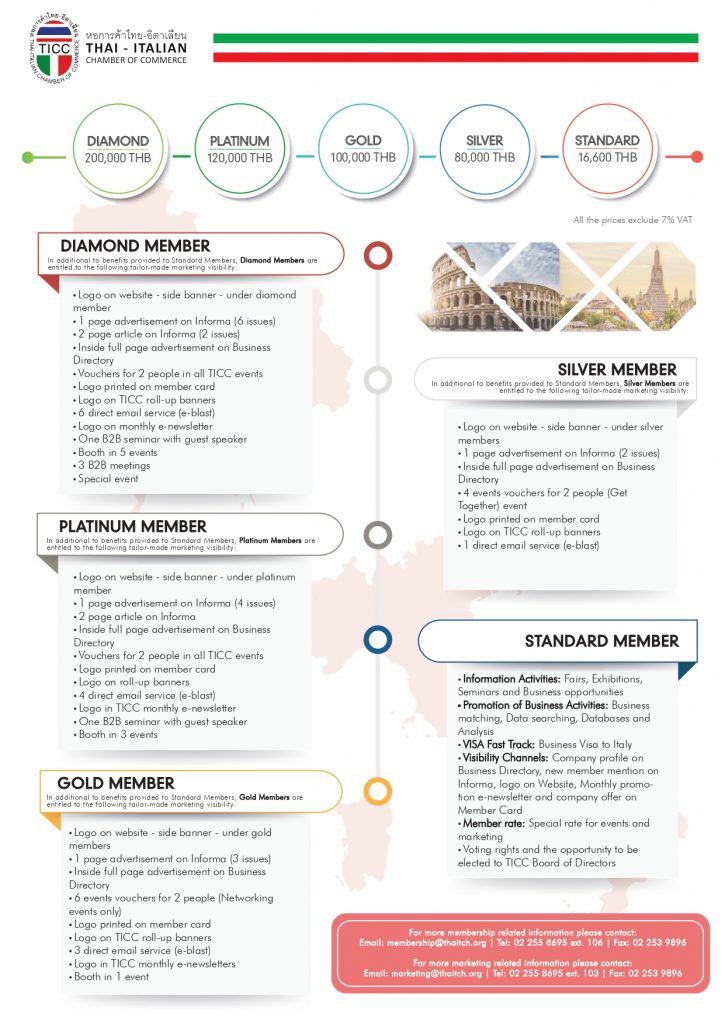
A chamber of commerce typically has hundreds, if not thousands, of members. While its primary mission is to support and promote businesses, each business has unique challenges and requirements. Therefore, chambers need to classify these businesses into different categories, commonly known as membership levels.
How are these levels determined? What is their structure? What benefits do they offer to member businesses? How does this benefit the chamber? In this blog, we will explore the details of membership levels, including their determination, structure, and the advantages they provide to both the member businesses and the chamber itself. Read on to learn more.
Key Takeaways
- The importance of establishing membership levels within a chamber of commerce is highlighted, detailing how different tiers can address the unique challenges and requirements of various businesses.
- The tiered dues model effectively caters to businesses' diverse needs, recognizing that larger businesses and smaller businesses have different requirements.
- Besides the tiered dues model, other membership models, such as the Fair Share Model, Investor Membership Model, Chamber Partner, and Community Builder, are explored
- Membership levels help improve renewals by offering customized benefits that cater to members' varying requirements.
- An AI-powered, all-in-one chamber management software like Glue Up can significantly streamline operations, enhance member engagement, and ensure seamless chamber management. It offers a comprehensive range of features that collectively help chambers manage their memberships more effectively and efficiently.
What Is a Tiered Dues Model?
The tiered dues model involves having different membership pricing levels to cater to businesses' varying needs. Essentially, it offers businesses what they need, recognizing that you cannot generalize each business and offer them the same thing at the same prices. Businesses vary in size and have their own unique requirements.
Large businesses and small businesses have different needs, so they cannot be placed on the same level. Therefore, it is necessary to set different tiers. The highest tiers receive the most benefits, while the rest receive benefits according to their respective tiers.
In fact, 80% of marketers say customer experience is a key competitive differentiator. Providing a stellar customer experience comes with understanding their needs and giving them what they require.
The tiered model is best in this regard, as it ensures that each business receives the level of service and benefits that match their specific needs and contributions.
What Are Other Types of Membership Models?

The membership models are not limited to tiers; there are also additional membership models. Let's explore these
Fair Share Model
The fair share model is a bit different than the regular membership model. Instead of a one-size-fits-all approach, the fair share model bases membership dues on the size or revenue of the business. This means that each member contributes an amount that is proportional to their capacity to pay, making it a more equitable system.
Larger businesses pay more, while smaller businesses pay less, reflecting their respective resources and ability to benefit from the chamber's services. Besides, this model aims to balance the financial contributions with the benefits received, ensuring fairness across the membership base.
Investor Membership Model
An investor membership model is a membership approach in which businesses or individuals contribute significantly higher dues in exchange for greater influence and benefits within the organization.
Chambers of commerce and other membership-based entities typically use this model to attract substantial financial support from key stakeholders.
Chamber Partner
The Chamber Partner membership model is designed for businesses or individuals deeply invested in the chamber's success. This model involves a higher financial commitment and offers enhanced visibility, exclusive access, influence in strategic decisions, and premium services.
Benefits include strengthened relationships with key stakeholders, increased brand visibility, and access to valuable resources.
Community Builder
The Community Builder membership model focuses on contributing to local community development. Members engage in community projects, networking opportunities, public recognition, and access to educational resources.
Benefits include making a tangible community impact, building strong connections with like-minded organizations, and recognizing as a leader in community engagement.
Why Are Membership Levels an Effective Choice?
Membership levels are an effective choice for a chamber of commerce because they provide a structured approach that aligns benefits with the commitment and needs of members.
Chambers that offer various membership levels can cater to their members' diverse requirements while ensuring that those who contribute more receive greater benefits. Membership levels not only incentivize higher participation and investment but also allow members to select the level of engagement that best suits their needs and capabilities.
As Bill Gates once said, great organizations demand a high level of commitment from the people involved. This saying highlights why membership levels are so effective: they inherently require a commitment from members.
Businesses can choose a higher level of membership and demonstrate their dedication to the chamber, which rewards them with more substantial benefits and opportunities.
Conclusively, this reciprocal relationship fosters a sense of loyalty and engagement, ultimately strengthening the chamber of commerce and its ability to support and advocate for its members.
How Do Membership Levels Help to Improve Renewals?

The stats show that over 84% of memberships have a churn rate below 10%, with more than half achieving a churn of less than 5%. The reason for this impressive retention could be that memberships have understood the diverse needs of their members and provided tailored solutions.
However, this is only possible when you have different membership levels than when using a one-size-fits-all approach.
Membership levels significantly increase renewal rates by offering customized benefits that cater to members' varying requirements. When you provide tiered options, members can select the level that best suits their needs and budget, ensuring they receive the most relevant and valuable benefits.
Anyway, this personalized approach builds a deeper connection between the members and the organization, enhancing satisfaction and loyalty.
Benefits Chambers of Commerce Can Offer in Tiered Memberships

Now that you understand the concept of tiered membership and different membership models, it's time to highlight the actual benefits that tiered membership provides to a chamber of commerce.
Let's find out what these benefits are:
Business Referrals: According to McKinsey & Company, word of mouth is a crucial factor behind 20% to 50% of all purchasing decisions. Tiered memberships enhance business referrals, driving more traffic and sales to member businesses.
Member-to-Member Discounts: Tiered membership improves networking and business within the chamber community through exclusive member-to-member discounts, fostering a supportive business environment.
Online Membership Directory Referrals: With enhanced directory listings, members gain greater visibility online, leading to more referrals and business opportunities.
Business After Hours: These networking events provide members with opportunities to build relationships, exchange ideas, and promote their businesses in an informal setting.
Young Professionals Group: This benefit supports the development of young professionals, offering networking, mentorship, and growth opportunities within the chamber community.
Mentors on the Move (Elite Group): Access to an elite group of mentors provides members with valuable guidance and support from experienced business leaders.
Volunteer and Meet: Volunteering opportunities enable members to give back to the community while building connections and enhancing their professional network.
Ribbon Cuttings: Chambers celebrate new businesses and milestones with ribbon cuttings, offering publicity and community engagement for member businesses.
Member Spotlight: Featuring members in newsletters or on social media highlights their achievements, boosting their visibility and reputation.
Website New Listings: New member listings on the chamber website increase exposure and attract potential customers and partners.
Social Media Posts: 81% of U.S. online consumers’ purchase decisions are influenced by their friends’ social media posts. Providing good service to businesses can lead to positive social media promotion, expanding the chamber’s reach.
Website Banner Ad: Placing banner ads on the chamber's website gives members prominent visibility and attracts more visitors to their businesses.
Website Other Ad: The chamber’s website offers additional advertising options that allow members to reach their target audience in various ways.
Online Directory Ad: Ads in the online directory boost member visibility, making it easier for potential clients to find and engage with them.
Enhanced Directory Listing: Enhanced listings offer members more detailed and attractive profiles in the online directory, increasing their appeal to potential customers.
Electronic Newsletter: Inclusion in the chamber's electronic newsletter helps members stay informed and promotes their business to a wide audience.
Monthly Magazine: Featuring members in the chamber's monthly magazine offers them extensive exposure and credibility.
Informational Webinars: Webinars provide members with valuable information and training on relevant topics, helping them stay competitive and informed.
Mailing – and Emailing – Lists: Access to the chamber’s mailing and emailing lists allows members to reach a broader audience with their marketing messages.
Advocacy: The chamber advocates for its members’ interests, influencing policies and regulations that benefit the business community.
Group Health/Life Insurance: Offering group health and life insurance plans helps members save money and provides valuable benefits to their employees.
Workers’ Compensation Policy: Access to group workers' compensation policies ensures that member businesses have affordable and comprehensive coverage.
Payroll Services: Tiered memberships often include payroll services and streamlining financial operations for member businesses.
Courses/Training: Members benefit from various courses and training programs that enhance their skills and business operations.
Annual Conference Training: Attendance at the chamber’s annual conference provides members with advanced training, networking opportunities, and insights into industry trends.
Overall, offering these diverse benefits through a tiered membership model lets chambers of commerce effectively meet the varying needs of their members, promoting growth and engagement within the business community.
How to Create Chamber of Commerce Membership Levels

Now, let's get to the point of how to create chamber membership levels. There are a few key practices to follow, and here they are:
1. Survey Members to Learn What They Find Valuable
The first thing to do is survey your potential members. Ask them what they need and what they find valuable. Natalie Angier has a famous saying: “Surveys show that surveys never lie.” So, if you conduct a survey, you will likely get the most accurate answers about what should be included in your tiers.
The feedback will provide a solid foundation for creating membership levels that truly meet your members' needs and expectations, ensuring higher satisfaction and engagement.
2. Quantify Your Existing Benefits
Once you've gathered feedback from your potential members, the next step is to quantify your existing benefits. Take stock of all the services, programs, and opportunities your chamber currently offers.
Assign a value to each benefit based on its cost, demand, and impact on member satisfaction. Moreover, the process will help you understand the full value of what you provide and identify which benefits are most attractive and impactful.
3. Develop New Benefits as Needed
After quantifying your existing benefits, you may find gaps in what you offer compared to what your potential members need and value. It is time to develop new benefits to fill those gaps.
Consider the feedback from your surveys and think creatively about what additional services, programs, or opportunities you can introduce. New benefits could include specialized training sessions, exclusive networking events, or enhanced promotional opportunities.
4. Assess and Determine Benefit Values
Evaluate the cost of providing each benefit and weigh it against its perceived value to your members. However the inclusion can be considering the time, resources, and financial investment required to deliver each benefit. Understanding the true value of your offerings will help you structure your membership tiers more effectively.
Assign appropriate values to each benefit within your membership levels to ensure that each tier provides a fair and compelling return on investment for your members.
5. Begin Creating Packages by Setting Parameters
You can now start creating membership packages. Set parameters for these packages, which involve several crucial considerations to validate they meet your members' needs and align with your chamber’s goals.
How Many Tiers Do You Need?
Determine the number of membership tiers you need based on the diversity of your member base. Generally, offering three to five tiers provides a good balance, catering to different sizes and types of businesses without overwhelming your potential members with too many choices.
What Pricing Will You Set for Your Packages?
Set pricing for each membership tier by considering the value of the benefits included, the financial capacity of your target members, and competitive pricing in your industry. Certify that each tier offers a compelling return on investment, making it clear why members should choose higher tiers.
How Will You Encourage Members to Choose Middle- and Higher-Priced Tiers?
Encourage members to choose middle and higher-priced tiers by highlighting the additional benefits and exclusive opportunities these levels offer. Use membership marketing strategies such as showcasing success stories, offering limited-time promotions, and clearly comparing the value each tier delivers.
How Will You Test Any New Membership Levels You Create?
Before fully launching new membership levels, test them with a small group of current members or new prospects. Gather feedback on the attractiveness, perceived value, and clarity of the tiers. Use this feedback to make necessary adjustments before a full-scale rollout.
How Will You Transition Members from Current Plans to New Plans?
Plan a smooth transition for existing members from current plans to new ones. Communicate the changes clearly, highlighting the improved benefits and any cost adjustments. Offer incentives or special deals to encourage members to upgrade to higher tiers during the transition period.
Will Members Be Able to Choose Individual Benefits (and if so, which ones)?
Decide if members can select individual benefits individually. If so, clearly outline which benefits are available for individual selection and their associated costs. Offering this flexibility lets you attract members who may not want a full package but still see value in specific services.
Can Your Current Membership Management System Handle Your New Tiers?
Verify that your current membership management system can accommodate the new tiers and any additional complexity they bring.
The verification includes handling different pricing structures, tracking benefit usage, and effectively managing member communications. If necessary, consider upgrading to a more robust system that can seamlessly support your new membership model.
6. Categorize Your List of Member Benefits
Begin by organizing your list of member benefits into categories that align with your new membership tiers. Group similar benefits together to create clear and logical packages.
For example, categorize benefits under headings like networking opportunities, educational resources, promotional services, and exclusive events. Besides, the categorization will help members easily understand what they receive at each tier.
7. Compile Your Packages into Engaging Documents or Graphics
Create visually appealing documents or graphics that outline your membership packages. Use clear and concise language, along with engaging visuals, to highlight the benefits of each tier. Infographics and attractive design elements can make the information more digestible and appealing to potential and current members.
8. Start Announcing the Changes by Choosing a Core Message
When you’re ready to announce the new membership tiers, choose a core message that communicates the changes' value and benefits.
However, this message should emphasize how the new structure meets members' needs better and enhances their experience with the chamber. Consistent messaging across all communication channels will help ensure members understand and appreciate the updates.
9. Fully Explain the Changes to the Dues Structure
Clearly explain the changes to the dues structure to your members. Provide detailed information on how and why the membership dues are changing, and how the new structure aligns with the value provided at each tier. Transparency is key to maintaining trust and ensuring members see the benefits of the new pricing model.
10. Highlight the New Benefits and Improvements
Emphasize the new benefits and improvements included in the updated membership tiers. Highlight how these changes address the feedback received from members and enhance the overall value of membership. Use testimonials, case studies, and examples to illustrate the positive impact of these new offerings.
11. Ensure Complete Information is Available Online
Make sure all information about the new membership tiers, benefits, and pricing is readily available on your chamber’s website. Provide detailed descriptions, FAQs, and an easy-to-navigate layout so members can quickly find the information they need. The online resource should be comprehensive and updated regularly to reflect any further changes or additions.
12. Thoroughly Explain Your Membership Transition Plans
Communicate your plans for transitioning existing members to the new membership structure. Outline the steps involved, any deadlines, and what members need to do to transition smoothly. Offer support through webinars, Q&A sessions, and dedicated helpdesks to assist members during this period.
13. Keep Feedback Channels and Communication with Current Members Open
Maintain effective member communication with your current members throughout the transition process. Encourage feedback and be responsive to any concerns or questions they may have. Regular updates, surveys, and direct communication channels will help ensure that members feel heard and supported during the changeover.
Following these steps will allow you to effectively implement and communicate your new membership tiers, ensuring a smooth transition and continued satisfaction among your members.
Examples of Chamber of Commerce Membership Levels
After sharing all the insights and important details about membership levels, it's time to show you a few examples of chambers of commerce that have implemented membership levels. Let's see what they are.
Chicagoland Chamber of Commerce
The Chicagoland Chamber of Commerce offers different tiers of membership:
- President’s Circle
- Leadership Circle
- Premier
- Executive.
Each tier has its benefits and privileges.
Columbus Chamber of Commerce
The Columbus Chamber of Commerce is another example of a chamber with different membership levels. The chamber offers three levels:
- Leadership
- Elite
- Growth
Each tier has its own set of perks and privileges.
American Institute of Graphic Arts (AIGA)
The American Institute of Graphic Arts (AIGA) offers five types of membership levels, each with different fees, requirements to qualify, and durations:
- Student
- Emerging
- Professional
- Leader
- Educator
Each level is designed to cater to the specific needs and stages of a graphic designer's career, providing tailored benefits and opportunities for growth and engagement within the community.
Indo-American Chamber of Commerce
Another example is the Indo-American Chamber of Commerce, which also offers different membership levels. These tiers provide various benefits and privileges tailored to meet the diverse needs of its members.
Thai-Italian Chamber of Commerce

The Thai-Italian Chamber of Commerce has different levels of memberships, including
- Standard Member
- Silver Member
- Gold Member
- Platinum Member
- Diamond Member
Each tier offers different perks and privileges, tailored to meet the varying needs of its members.
Done with Setting Membership Levels? Chamber Management Software is All You Need!
Once you are familiar with membership levels, their structure, benefits, and examples, you'll need chamber management software to run your chamber effectively.
Chamber management software like Glue Up helps you create and manage multiple membership levels to cater to your members' diverse needs, making your work easy and efficient. Besides, it offers a range of features to streamline your operations, enhance member engagement, and help you manage your chamber seamlessly.
Let's explore what Glue Up has to offer :
Unlimited Membership Types: Customize and manage an unlimited number of membership types to suit different business sizes and requirements.
Customizable Dashboard: Tailor your dashboard to display the most important metrics and insights for each membership level, helping you track and analyze member engagement and satisfaction.
Member Directory: Maintain an organized and accessible directory of all members, categorized by membership levels, for easy networking and communication.
Member Benefits: Offer exclusive benefits and services specific to each membership level to enhance the value of membership and retain members.
Membership Management: Easily manage member data, track renewals, and automate membership processes, ensuring a seamless experience for members across all levels.
CRM: Centralize all member interactions and data in one place, allowing you to build stronger relationships and enhance member engagement across different membership tiers.
Furthermore, by utilizing Glue Up’s comprehensive membership-level features, you can create a structured and efficient system that meets your members' unique needs, ultimately enhancing their experience and loyalty.
To explore how Glue Up can support your chamber's needs in creating and managing membership levels, book a demo today.



